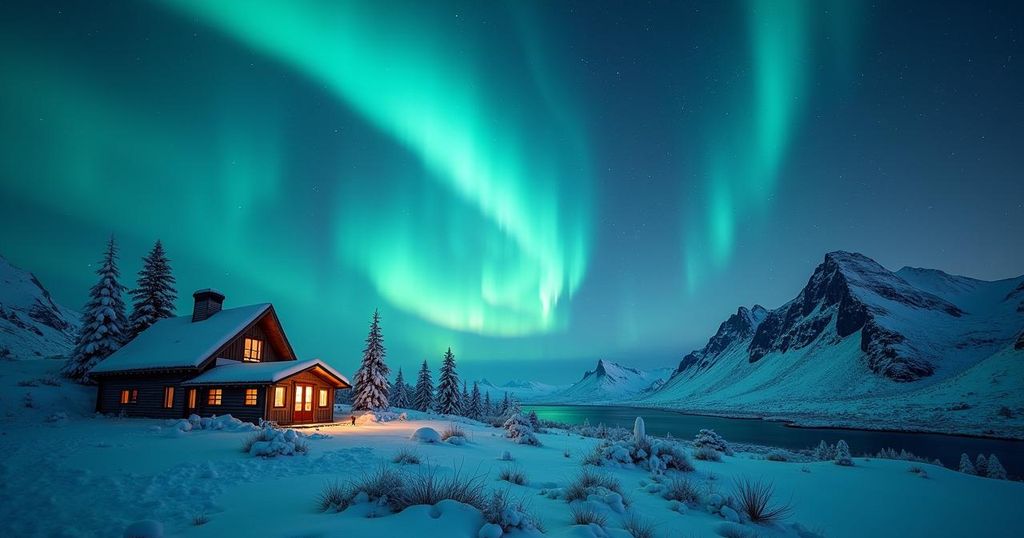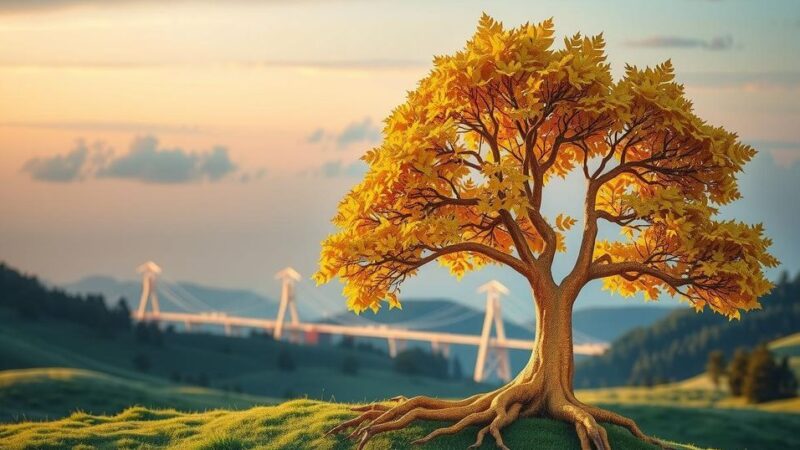A significant solar storm on Thursday resulted in the northern lights being visible in atypical locations such as New York, D.C., and Texas. The event was driven by a coronal mass ejection from the sun, creating vibrant auroras that captivated observers across North America and beyond. Experts predict more auroral displays in the coming years as the solar cycle progresses.
On Thursday night, a significant solar storm produced stunning displays of auroras in vibrant hues of purple, red, and green, extending the visibility of the northern lights to unusual locations worldwide. Typically observed closer to the poles, the aurora borealis graced the skies as far south as New York, Washington D.C., and even Texas, with reports of these phenomena reaching areas such as Alabama and Mississippi. This geomagnetic event marks the second notably intense storm of the year, following a powerful storm on May 10 and 11 that was deemed “extreme” and rated 5 out of 5, categorized as the most impressive solar outburst in decades. The auroras were visible not only in North America but also in various regions around the globe, including southern Africa and central Europe. The Thursday geomagnetic storm was instigated by a coronal mass ejection from the sun, a violent explosion of solar particles traveling at nearly 1.5 million miles per hour. As these particles interacted with Earth’s magnetic field, they excited atmospheric nitrogen and oxygen molecules, resulting in the colorful displays commonly associated with auroras. In lower latitudes, the appearance of red auroras was prevalent due to their occurrence at higher altitudes, allowing them to be visible from greater distances. Europe experienced the initial effects of the northern lights on Thursday, with vibrant displays across London and into southern France. There were concerns among enthusiasts regarding the visibility of the auroras in the United States before sunset; however, the spectacle persisted, captivating viewers across the country. Locations that missed the spectacle in May, such as D.C., witnessed a rare occurrence where the lights could be seen clearly in the evening hours, particularly between 7:10 and 7:25 p.m. These captivating geomagnetic storms are expected to be more frequent as we progress through the peak of the 11-year solar cycle, which increases the likelihood of solar outbursts. Experts in the field have indicated that residents can look forward to more aurora displays in the coming years. Dr. Bob Leamon, a solar physicist at the University of Maryland Baltimore County and affiliated with NASA, remarked, “The next three or four years, we should see some fine displays of aurora. It’s like a whole generation of people discovering something for the first time.”
Auroras, commonly referred to as the northern lights (aurora borealis) and southern lights (aurora australis), are natural light displays predominantly seen in polar regions due to the interaction of solar particles with the Earth’s magnetic field and atmosphere. The phenomenon is heavily influenced by solar activity, which follows an approximately 11-year cycle characterized by varying levels of sunspot activity and solar storms. During periods of heightened solar activity, coronal mass ejections can lead to spectacular auroral displays at latitudes that typically do not experience them, providing opportunities for observers farther from the poles to witness this awe-inspiring spectacle. Recent solar storms have fostered heightened interest and engagement amongst the public, culminating in exciting astronomical events. Understanding these cycles and their resulting effects is crucial for both scientific and amateur astronomers alike, allowing for better anticipation of auroral opportunities.
In conclusion, the recent severe solar storm has illuminated skies far beyond the traditional polar regions, bringing the northern lights to the attention of a broader audience. With the occurrence of this geomagnetic event occurring during the peak of the solar cycle, experts anticipate further opportunities for aurora viewing in the near future. The collective experience of witnessing these rare geological phenomena fosters a sense of wonder and discovery, reminding humanity of the natural beauty present in our universe.
Original Source: www.washingtonpost.com






